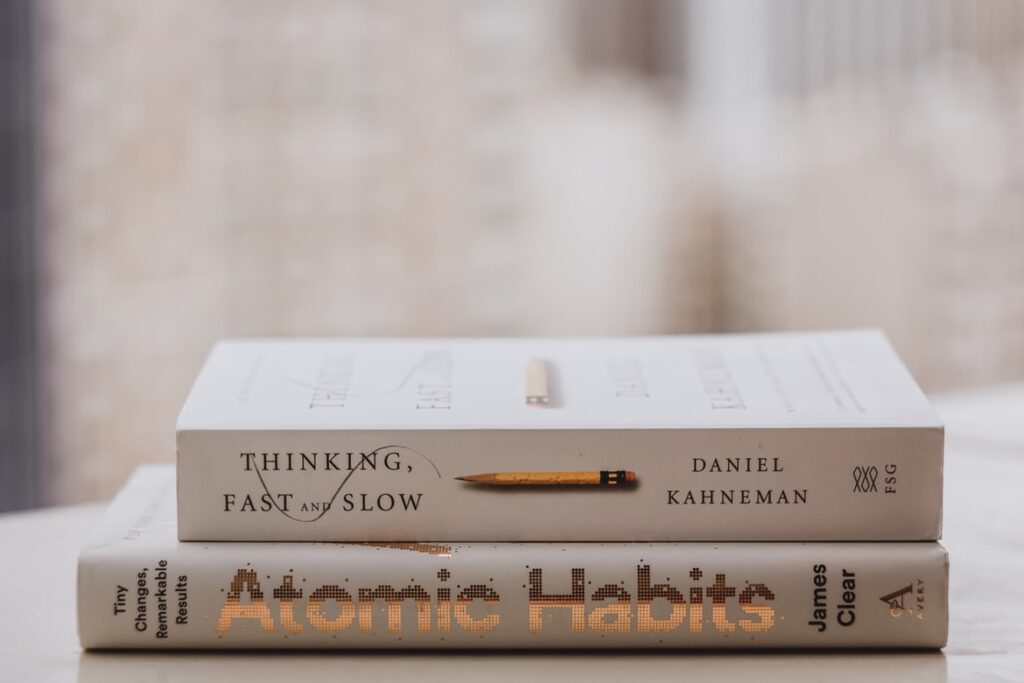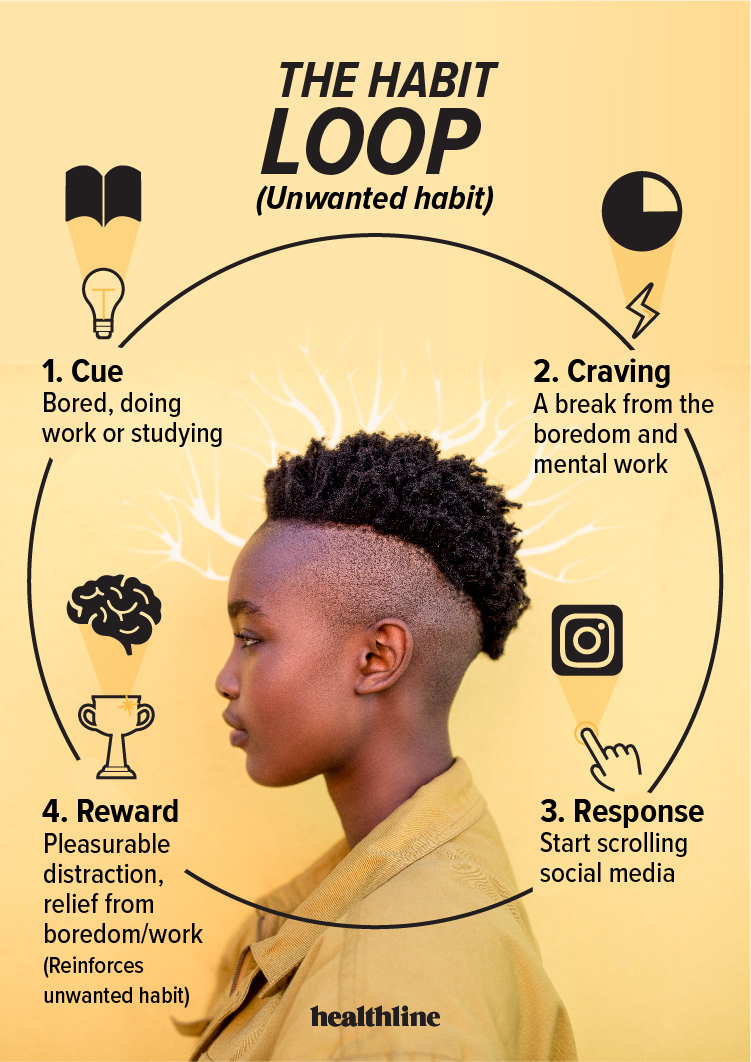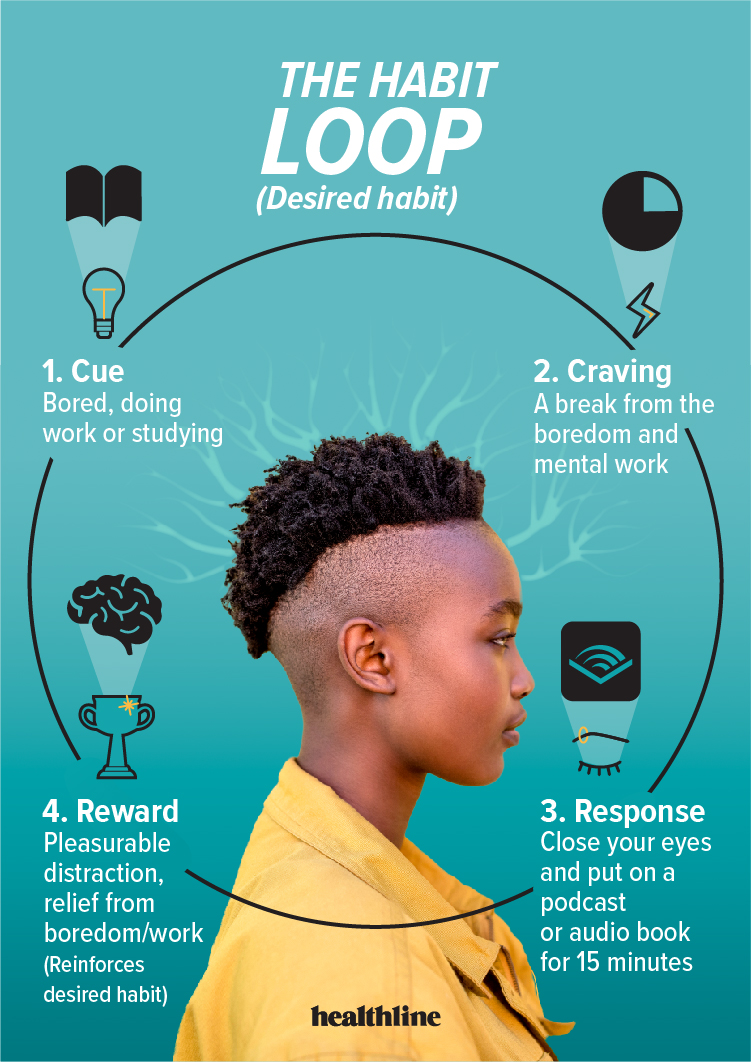7 Science-backed Strategies To Replace Bad Habits With Good Ones

The truths about replacing habits.
What does it takes to change habit? You just have to learn proven strategies to rewire your brain.
Let’s face it. Stopping bad habit is challenging and developing good habits is difficult. Moreso, replacing bad habits with good ones isn’t for the faint-hearted.
Have you ever tried in the past to stop complaining, nail biting, eating junk food, smoking, binge drinking, stress eating, being late, watching too much TV, or spending time with people who don’t add value to you? And despite all your initial commitment and efforts you went back to do those bad habits you want to change. You are not alone. Studies have shown that only 19 percent of people keep a resolution for more than 2 years.
Perhaps, you want to develop good habits like regular exercising, reading more, listening deeply, gratitude journal, or disciplined eating but you couldn’t achieve your goal. It can take between 18 and 254 days for a person to form a new habit. In other words, it takes psychology and strategies to develop new habits.
Definition of terms.
Habits: these are routines or rituals that are unconscious or that have become almost automatic or second nature. A habit is a practice you repeat so regularly that it can be hard to change.
Neuroplasticity: the brain’s ability to change throughout your life
Experience-dependent neuroplasticity: the passive process of reinforcing habits by doing them unconsciously over and over again, whether they’re good or bad
Self-directed neuroplasticity: the active process of consciously reflecting on how habits make us feel.
Where do habits come from?
Your sensory nervous system is always monitoring for actions you can take that will deliver a hit of dopamine, the brain’s reward chemical. We’re wired to seek out pleasure.
“Any habit we develop is because our brain is designed to pick up on things that reward us and punish us,” explains Dr. Sanam Hafeez, a clinical psychologist and neuropsychologist based in New York City.
When your brain recognizes a pattern, such as a connection between action and satisfaction, it files that information away neatly in an area of the brain called the basal ganglia. This is also where we develop emotions and memories, but it’s not where conscious decisions are made — that’s the prefrontal cortex.
This may be what makes habits so hard to break. They come from a brain region that’s out of your conscious control, so you’re barely aware you’re doing them, if at all.
What is the Habit Loop?
A habit is a practice you repeat so regularly that it can be hard to change. This could be biting your nails when you’re worried, picking up a bottle of wine whenever you pass the liquor store, or cracking open a bag of chips while watching TV at the end of the day.

Design by Ruth Basagoitia
A habit might even be unconscious, like jiggling your leg while you’re on a flight, or licking your lips when you’re forced to do some public speaking.
Habits are actions that are triggered by cues, such as a time of day, an activity, or a location. They culminate in a feel-good reward that, through repetition, fuses the connection between cue and reward firmly in the brain.

The_Habit_Loop
Design by Ruth Basagoitia
The Habit Loop consists of the following four components:
1. The Cue. The cue is the stimulus that triggers the behavior. It could be an external stimulus such as something you see, hear, or smell. It could also be an internal stimulus such as a drop in blood sugar, an emotion, or a thought.
2. The Routine. This is the habitual behavior or routine that we execute in response to the cue. It could be reaching out for a piece of chocolate in response to a drop in our blood sugar, reaching out for a drink in response to a higher stress level at the end of the day, or going to the gym first thing every morning.
3. The Reward. Ultimately, this is the reason for performing the habitual routine. It could be the good feeling that a rise in blood sugar brings about, or the “high” that results from an intense workout at the gym.
4. The Craving. This is the Reward Anticipation Signal generated by our brain in response to the cue and in anticipation of the expected reward. In fact, our brain memorizes the satisfying sensation or feeling that results from the reward. It is our desire to experience this satisfying sensation or feeling that motivates us to execute the behavior in response to the cue.
7 Science-backed strategies to break an old habit or develop a new one
A. The Power of Reason (Why)
Why do you want to start this new habit? What will happen to your health, happiness, self-esteem and overall quality of life in the short term and long term if you develop this particular new habit? What are the reasons you need to stop this bad habit? What does this current bad habit is causing you financially, physically, morally, spiritually or emotionally?
At the core of rewiring habits is reflection.
It’s a pillar of cognitive behavioral therapy, which basically works like this: Try new things and pay attention to how they make you feel. That second part is absolutely key. “It’s the best hack for changing preset behaviors,” says Hafeez.
To practice it at home is straightforward. Reflect on how unhealthy behaviors make you feel bad, and how healthy behaviors make you feel good. Then write it down. Then talk to someone about them. Then reread what you’ve written a month down the road.
B. Start Small
There is nothing wrong with big, audacious goals, of course. But there need to be smaller, bite-sized achievements along the way. Accomplishing even a tiny goal can offer enough of a dopamine kick to reinforce behavior and boost you to the next step.
Once you have your bite-size habit ingrained — say, committing to exercising, starting with the goal of 10 minutes a day — it’s easy to expand or contract as you need to.
C. Read Out Your Goals
Saying aloud affirmations may have a woo-woo reputation, but saying your goals out loud to yourself does actually make you more likely to do them, and it may help increase your sense of self-worth too, according to research
Dr. Tom Kannon is a psychiatric mental health nurse practitioner. He says that when people have undergone brain scans while saying positive affirmations, the brain “lights up like a Christmas tree.”
“Your brain truly wants to believe everything you’re saying,” he says.
D. Work with a plan
“Work with nature,” suggests Hafeez.
If you’re a visual or spatial person, build new habits around the format that works best for you. If your goal is to read a book a week, but you’re having trouble sitting still and focusing on your novel, download the audiobook and “read” while you stroll your neighborhood.
If you want to start jogging or walking for exercise in the morning and you like gisting. Find few people you can exercise together while you still gist with them.
E. Change your environment to change your habits
A 2018 review of research found that environmental pressures can be more powerful than simply willing yourself to achieve a goal. In other words, change your environment to change your habits.
So if you want create a new habit like, “Be more mindful,” instead of trying to achieve it with sheer willpower, create a tangible cue to link it to.
For instance, you could leave a pen and gratitude journal on your bedside table. Then, every night before you go to bed, you’ll see it, pick it up, and write down what you’re grateful for.
F. Build on an existing routine
Habit stacking, as popularized by James Clear in his book “Atomic Habits,” takes the mini-habit idea one step further.
Take a habit you already practice, and add on one little positive thing to your routine, like doing calf raises while you brush your teeth.
If you take a snack break at 1 p. m. every day, why not walk around the block at the same time?
G. Be patient with yourself
Whether you want to stop an old habit or develop a new one, patience is a must, not an option.
Of course, there are people out there who can just go cold turkey with a negative habit. But the reality is, they’re very rare. The Centers for Disease Control and Prevention (CDC) reports that most people who smoke try to quit smoking 8 to 11 times before they break the habit for good.
Be kind to yourself as you try to break a pattern. Falling back into a habit doesn’t mean you’ve failed.
“Instead of thinking of yourself as a failure, reframe setbacks as, ‘I didn’t succeed that time, but I can still try again,’” suggests Kannon.
Consistency will come with practice, and so will success.
For your virtual consultation for mental health, sexual health, women’s health, chronic care, urgent care and general well-being.
HubCare is your reliable plug for all your healthcare needs anytime, anywhere. Our goal is to make quality healthcare affordable, accessible and reliable for all africans.
To your good health!
You may provide feedback on the article using the comment section below. You can also directly talk to me on sesan@hubcarehealth.com
Be Kind, share this article with your friends
Sesan Kareem
Sesan Kareem is a certified trainer and author. His mission is to use his clinical and leadership skills to democratize healthcare for all Africans
REFERENCES
https://www.lifehack.org/articles/lifestyle/bad-habits-quit.html
https://www.ncbi.nlm.nih.gov/pmc/articles/PMC4814782/
https://www.sciencedirect.com/science/article/pii/S2352154617301602
https://www.ncbi.nlm.nih.gov/pmc/articles/PMC4908897/
